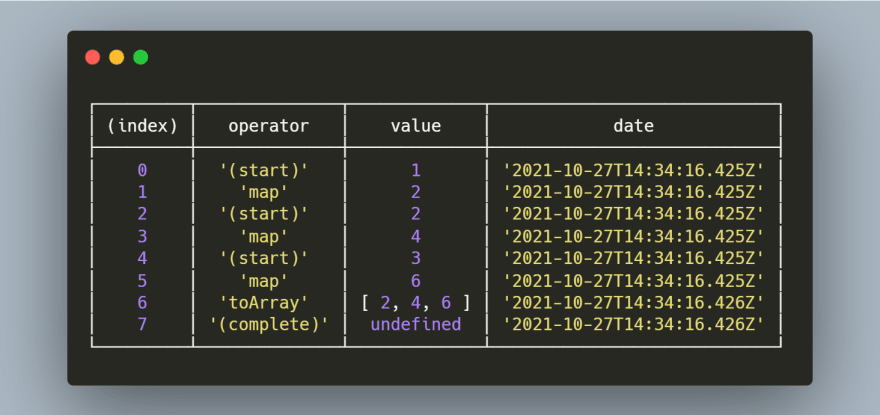When i first started approaching reactive programming and rxjs i struggled a little bit to understand how data flows throught observables, pipes, operators and so on. All i had to help me were marble diagrams, but they just helped increasing the headache.
I wanted to create something that could help beginners approaching rxjs, while helping more experienced developers debug complex pipes.
This is how rx-debugger is born!
How does it work?
Getting started with rx-debugger is super easy. All you have to do is patching source observable and using operators exported by the library.
Here is an example:
import { rxDebugger, map, toArray } from 'rx-debugger';
import { of } from 'rxjs';
rxDebugger(of(1, 2, 3))
.pipe(
map((item) => item * 2),
toArray()
)
.subscribe();
Doing so, you will get following output nicely printed in the console:

Isn't that super cool?
By the way, rx-debugger supports way more options than just printing tables in the console. You can find all the options in the docs.
Contributing
rx-debugger is open source and hosted on GitHub. While being fully functional, it is in early stages of development, and any help or feedback would be appreciated!



Top comments (0)